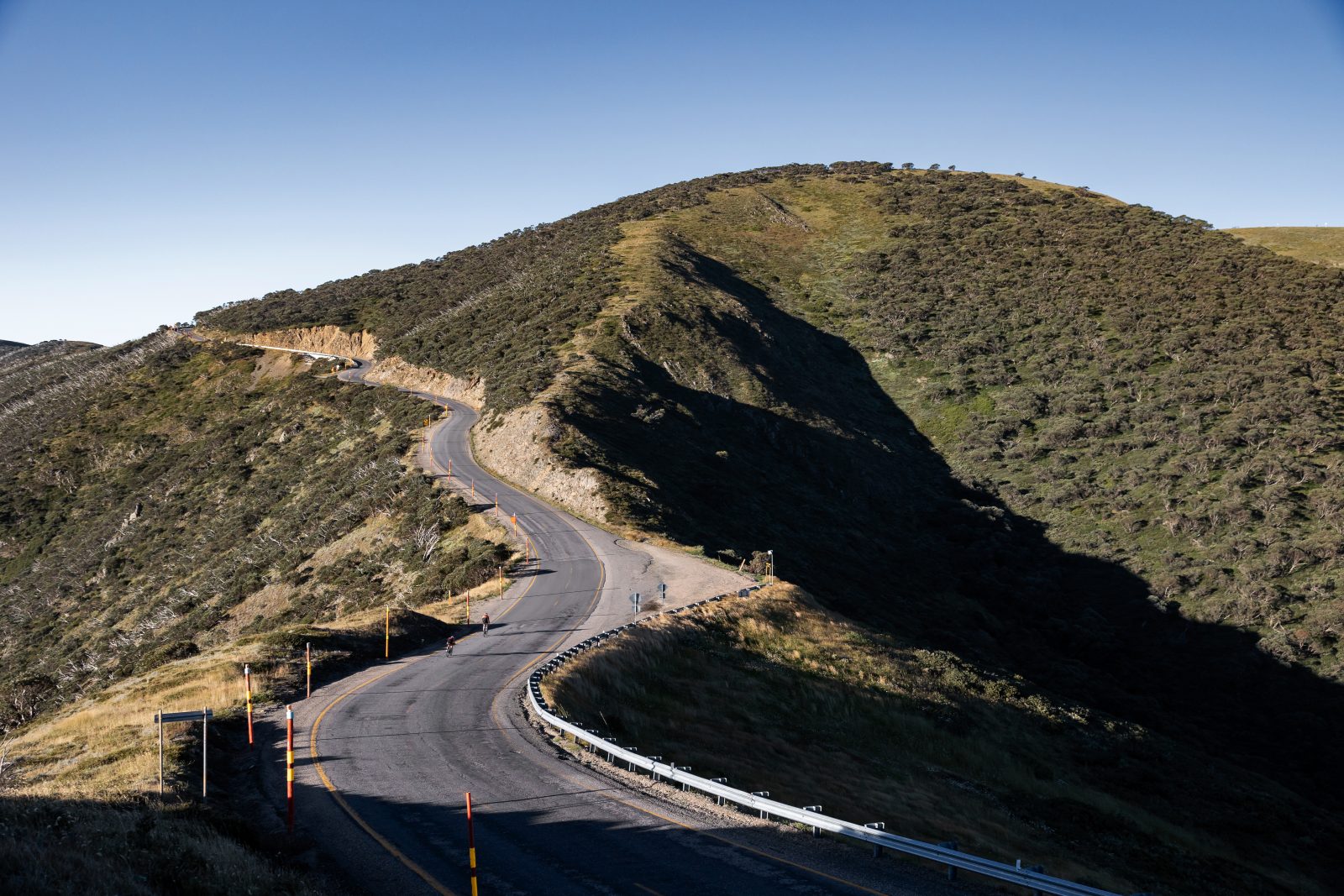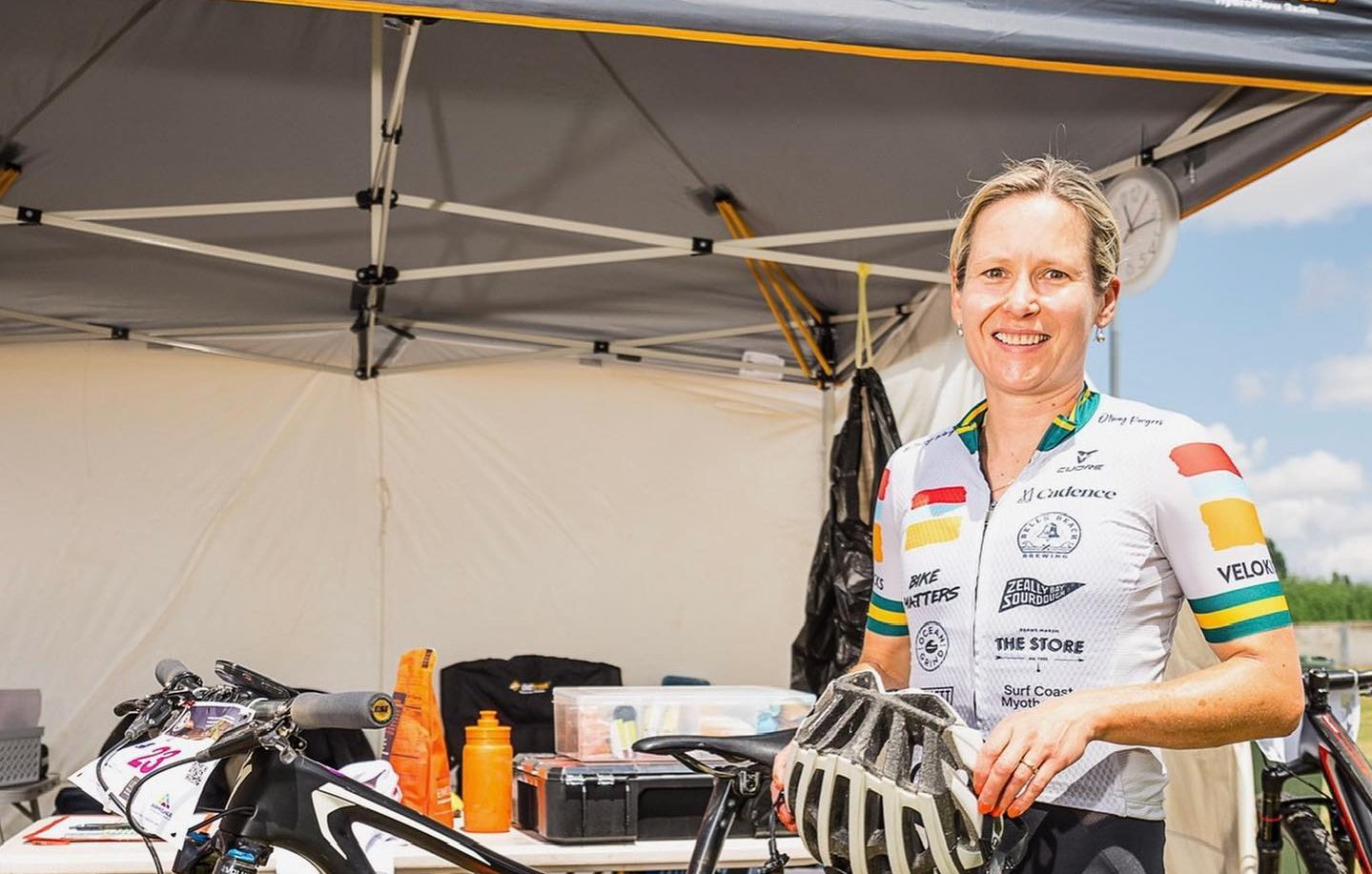Specialized is 50 years old this year, and it’s safe to say the brand wouldn’t be where it is without the Tarmac
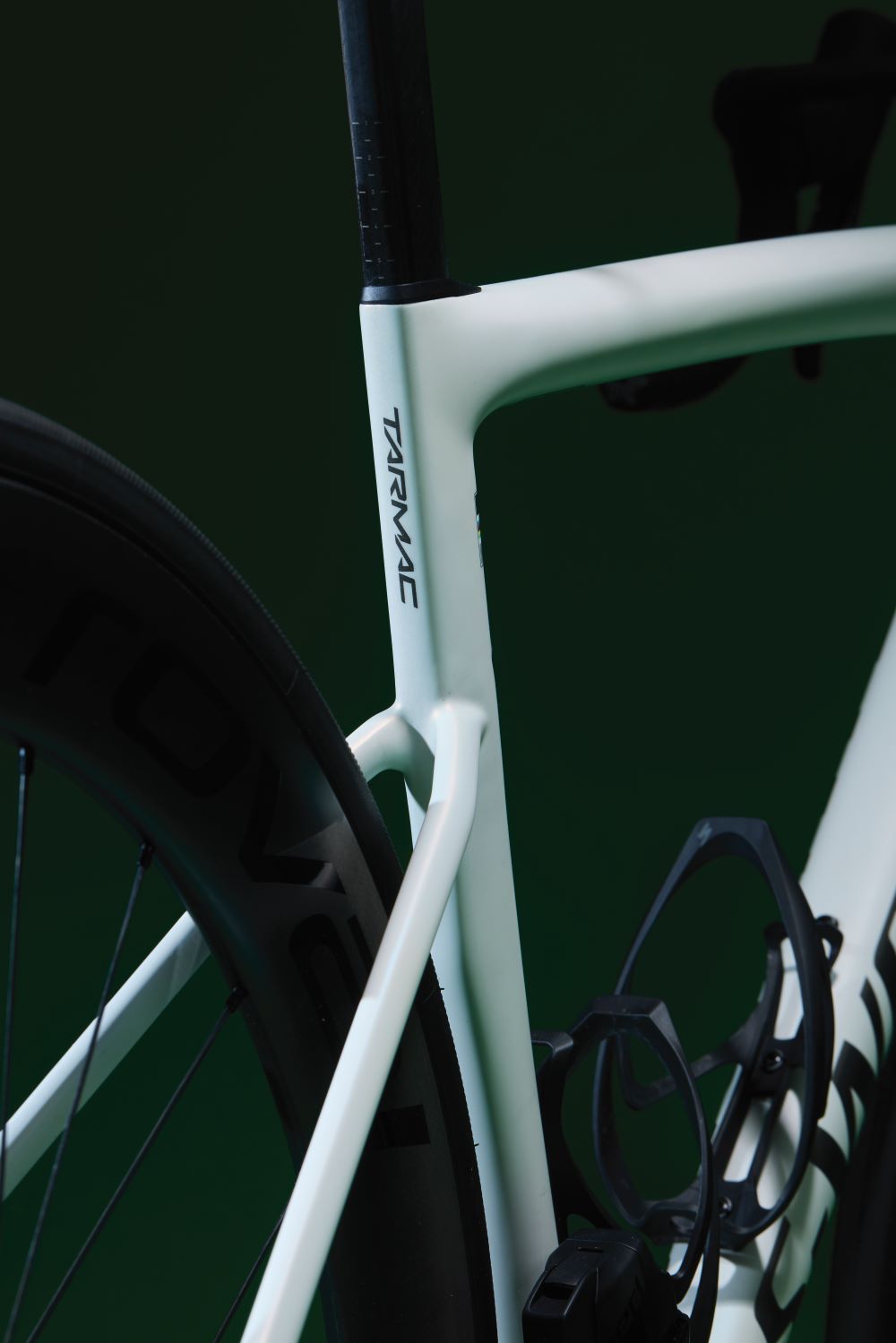
Words Sam Challis Photography Tapestry
There aren’t many bikes more synonymous with road racing – and with road racing success – than the Specialized Tarmac.
To illustrate the point, out of the last 20 men’s and women’s World Championships Road Races, the Tarmac has been ridden to victory in half of them.
That’s on top of wins in all three Grand Tours and a hatful of spring Classics.
In terms of winning pedigree, Specialized is now up there with the Pinarellos and Colnagos of the racing world.
However, those are brands with decades more heritage, as even though Specialized celebrates its golden anniversary this year, it didn’t have a foothold in the road market until around 25 years after Mike Sinyard founded the brand.
‘Up until 2000 we were really more of a mountain bike company,’ says Stewart Thompson, Specialized’s road category leader.
‘We’d been around a while by that point and were one of the bigger brands in that space but had no road presence.
We realised that if we wanted to be taken seriously on the road scene we had to make a legitimate race bike for teams to win on at the highest level.
There was this tense meeting in our Morgan Hill office where people were like, “We’re going to win the Tour de France in 10 years.” Mike, to his credit, said, “Yeah, go for it, do what it takes.”
‘Technically, we did end up doing that – twice in the same year in fact, when Andy Schleck was retrospectively awarded the 2010 title stripped from Alberto Contador, who were both on SL3s – but it certainly wasn’t an easy process.
There’s a running joke here that if we knew how hard it was going to be, we might not have done it.’
Hard yards
Specialized’s pre-existing in-house facilities and expertise got its road line off the ground and prototypes started to come together, but the brand knew pro rider feedback would be critical in developing something competitive.
‘No one at the elite level really wanted to know us at that point though,’ says Thompson.
Specialized eventually got its foot in the door with an Italian team, Domina Vacanze.
‘Fortunately for us, the team had Mario Cipollini in its ranks.
He won the 2002 World Championships Road Race and Milan-San Remo on our prototypes.
Some were really wacky – we used aluminium tubes from our mountain bikes and one bike Cipollini rode had a BMX top tube that we squashed to give it enough lateral stiffness.
Those results and his feedback were the foundation for us launching the first Tarmac.’
In 2003 the Tarmac E5 came along.
Interestingly, it used a frame made from a collection of both aluminum and new-fangled carbon composite tubes.
The metal was for stiffness, while the carbon reduced the weight.
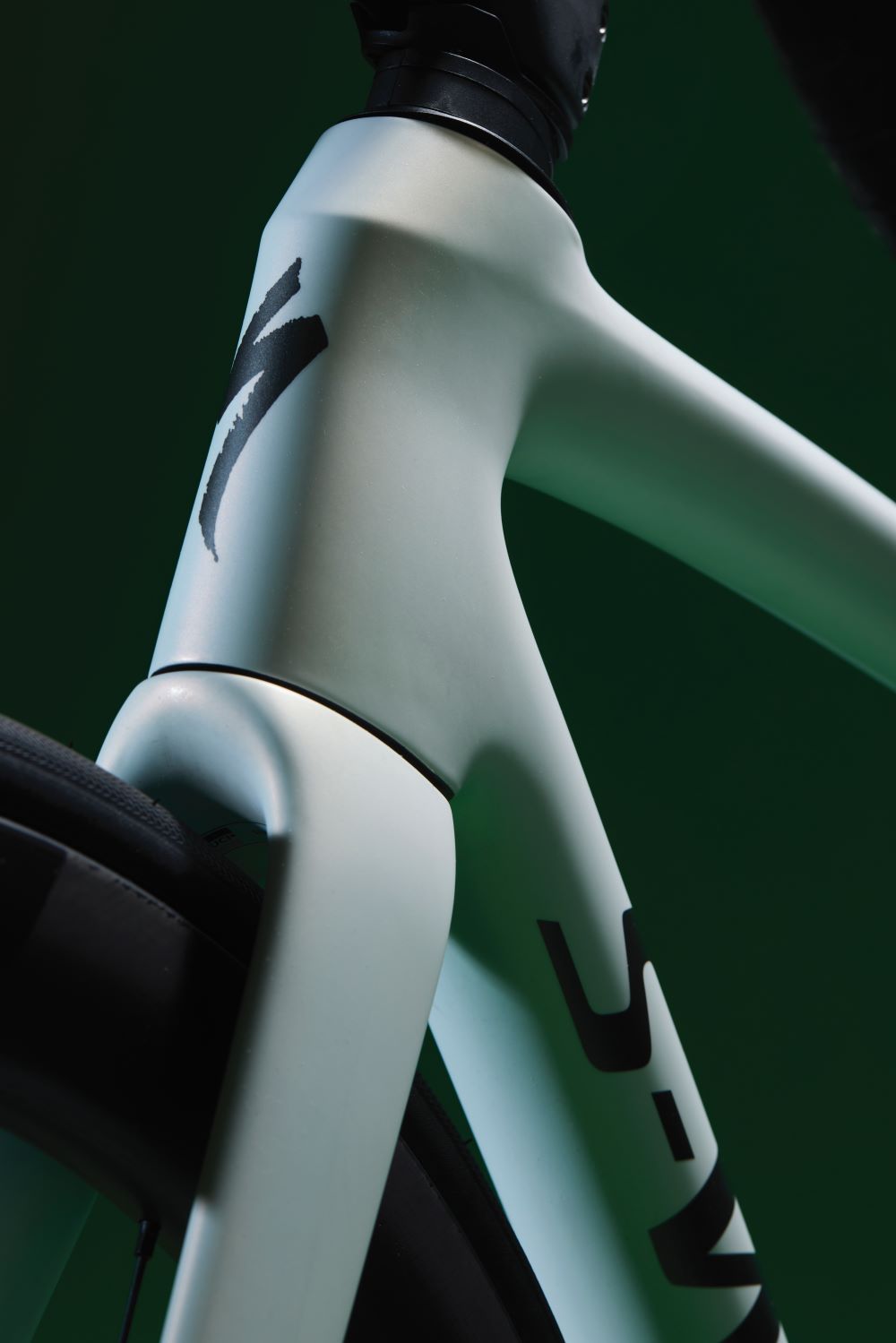
Within a couple of years, Specialized had landed the sponsorship of the QuickStep-Innergetic team and Tom Boonen picked up where Cipollini left off in terms of providing feedback.
He had won the 2005 World Championships Road Race and was instrumental in the design of the Tarmac SL, which supplanted the E5 in 2006 and became Specialized’s first full composite frameset.
‘Tom was a great guy but very demanding of the equipment he used.
He wasn’t mean but would be very direct when a feature didn’t work for him,’ says Thompson.
‘Luckily we’d had Cipollini – another big, strong rider – so were accustomed to working in this way.
But our sponsorship of QuickStep-Innergetic also allowed us to access climbers like Paolo Bettini, who brought an entirely diff erent perspective to our designs.’
Boonen and Bettini’s feedback fuelled development of the SL2, released in 2008.
Boonen said the SL felt disjointed front-to-back, while Bettini wanted more comfort
. Thanks to improved testing and fabrication methods, the SL2 had a much stiff er rear end but was also specifi cally tuned dependent on size in areas such as the seatstays – which before were just the same tubes cut to diff erent lengths – to create more comfort as well.
‘The development of the SL2 helped us nail down the Tarmac’s geometry, which hasn’t changed much since,’ says Thompson.
‘It illustrates how valuable pro rider feedback is.’
The SL2 is regarded as the fi rst Tarmac that would still feel capable today.
Its design was so successful that nothing drastic changed in the next seven years.
‘SL3 and SL4 mainly iterated on the SL2’s revolution, incrementally dropping weight and adding stiff ness as our composite knowledge developed,’ says Thompson.
Reining it in
By the SL4 those stiff ness levels were almost becoming too much in the smaller frame sizes.
Alberto Contador, then riding for the Specialized-sponsored Team Saxo Bank, fed back that the bike was getting too harsh.
Specialized worked with Contador and an SL4 loaded with strain gauges to work out how the frame responded to him.
‘As a result, in 2015 the SL5 debuted the application of our “Rider First Engineering” concept, which were stiff ness targets that varied across diff erent parts of the bike, depending on how riders of different sizes load the frame,’ says Thompson.
The SL5 proved to be as complete an overhaul as the SL2 was, for the bike was the first to be designed with input from high-end automotive manufacturer McLaren, as well as the first to be off ered in a disc brake version.
‘McLaren, owing to some computer simulation resources we didn’t have, helped us put together an extremely light carbon layup,’ says Thompson. ‘It helped make our disc bike competitive right out of the gate.’
The SL5 presided over three consecutive World Championships Road Race wins for Peter Sagan (who wasn’t the most active feedback partner because he didn’t much care about the fi ner details of bike design), but within that time aerodynamics exploded to such an extent that Specialized invested in its own wind-tunnel.

The brand’s dedicated aero bike, the Venge, started to have an increasingly symbiotic relationship with the Tarmac.
‘Both made the other better, and aspects of the Venge fed into the SL6 that came along in 2018 to make it faster.
That was another huge project, because we had to develop both rim and disc bikes concurrently as we weren’t sure if the UCI would approve disc brakes,’ says Thompson.
In 2021, the SL7 made things a huge deal simpler.
Rim brakes were gone, as was the Venge. Specialized declared that its latest Tarmac could do it all.
Truncated aerofoil tube profi les were paired with integrated components from in-house brand Roval to make the bike both fast and light.
‘It was a risky move, but we believed in it because, if we executed it well, it would solve so much confusion for our pros over which bike was needed when.
We figured simpler was better for consumers too.
We proved you don’t need separate race bike categories.’ Last year the SL8 reinforced this opinion.
Specialized says it is its lightest race bike to date (685g frame weight) despite being faster aerodynamically than the Venge ever was.
For all the eff ort Specialized has put into the Tarmac over the years, the bike has paid back in kind.
‘As I said, it has been an intense project from the very start,’ says Thompson. ‘But in turn, it changed us entirely.
We became a performance road brand, and then one that doesn’t just keep up, but stands out.
Specialized has the Tarmac to thank for that.’
Tarmacts and figures
Specialized’s race bike by the numbers
›21 Years since the Tarmac first launched
›9 Generations of Tarmac to date
›9 Number of models in the Tarmac range
›685 Weight of SL8 frame in a size 56cm
›55 Number of iterations of the SL8 during development
›27 Tarmacs ridden at the 2014 Tour de France
›10 Number of World Championships wins over the past 10 years (men and women)
›9 Tour of Flanders wins since 2008
Paving the way
The Tarmac’s pivotal moments
2003
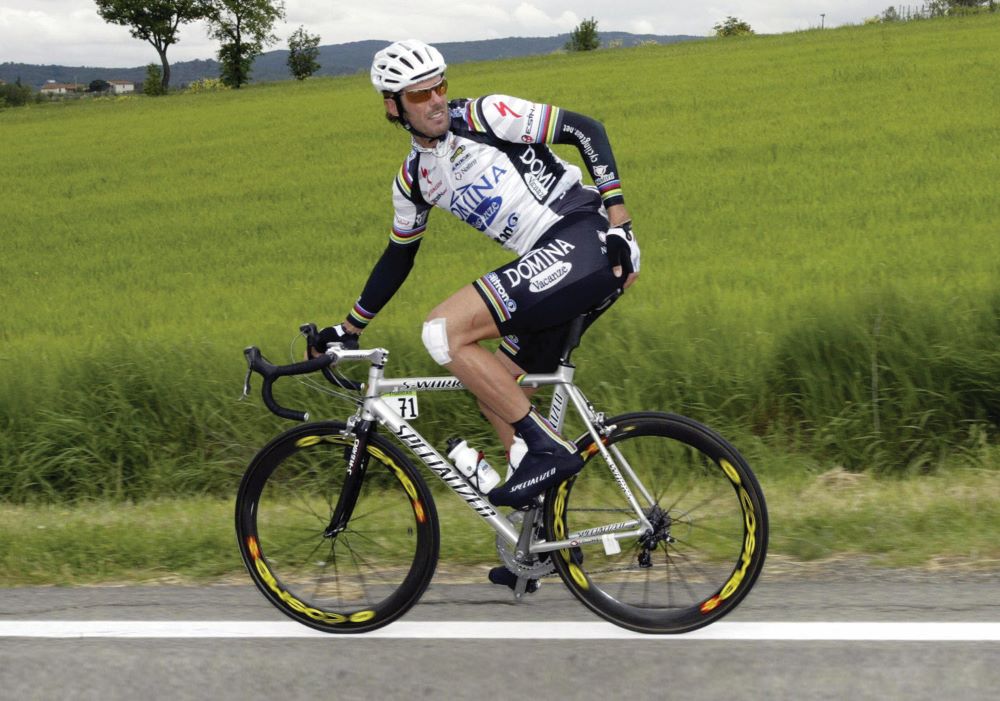
First-generation Tarmac E5 is made from a blend of aluminium and carbon tubes for light weight and stiffness
2006

Developed with input from Tom Boonen, the SL1 is the first full-carbon Tarmac, introducing Specialized’s FACT composite blend
2008

SL2 improves stiffness and comfort for riders of different heights using specific tube profiles for each size
2010
SL3 drops more than 150g in weight over SL2 thanks to refined fabrication methods
2010

The Tarmac wins the Tour de France under Team Saxo Bank’s Andy Schleck 2011Mark Cavendish wins World Championships Road Race on a Venge, pipping Australia’s Matt Goss, riding a Tarmac, on the line
2011

Mark Cavendish wins World Championships Road Race on a Venge, pipping Australia’s Matt Goss, riding a Tarmac, on the line
2011

SL4 arrives just one year after the SL3, with claimed 19% better stiffness-to-weight thanks to another revision in frame construction
2015

Peter Sagan wins first of three consecutive World Championships Road Races on the SL5. Lizzie Deignan wins women’s Road Race on the same model
2015

SL5 is the first Tarmac to be offered with a disc brake option, but it is 80g heavier than the rim brake bike and has an offset rear end that requires specific wheels
2017
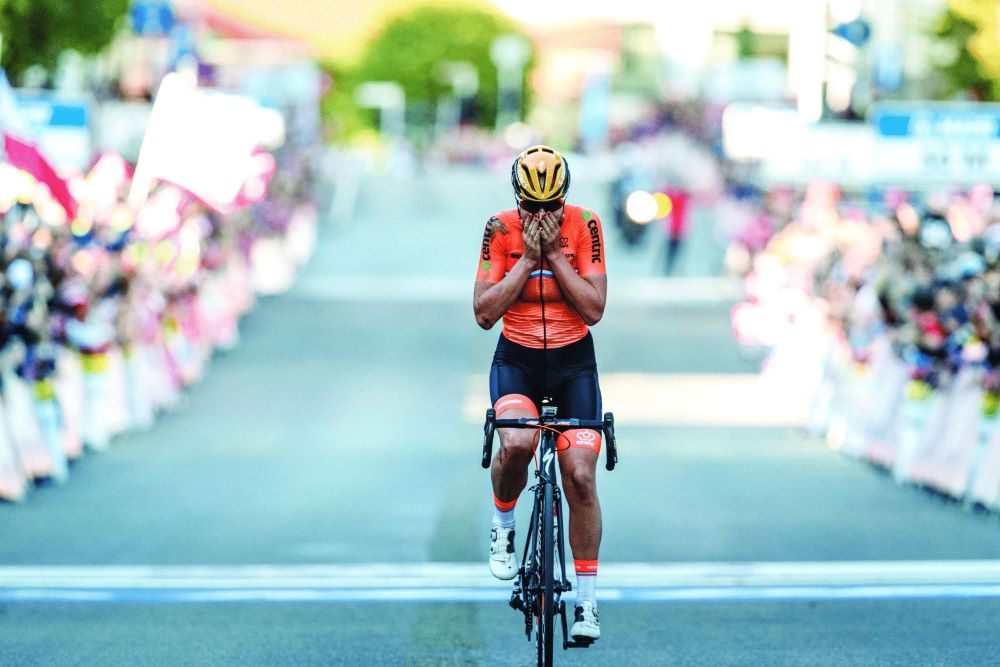
Sagan wins his final WC Road Race aboard the SL5. The Netherlands’ Chantal van den Broek-Blaak wins women’s Road Race on the same model
2019
Aerodynamics arrive in the SL6, using features such as dropped seatstays. Disc brake model is greatly refined to achieve a 200g weight loss
2021
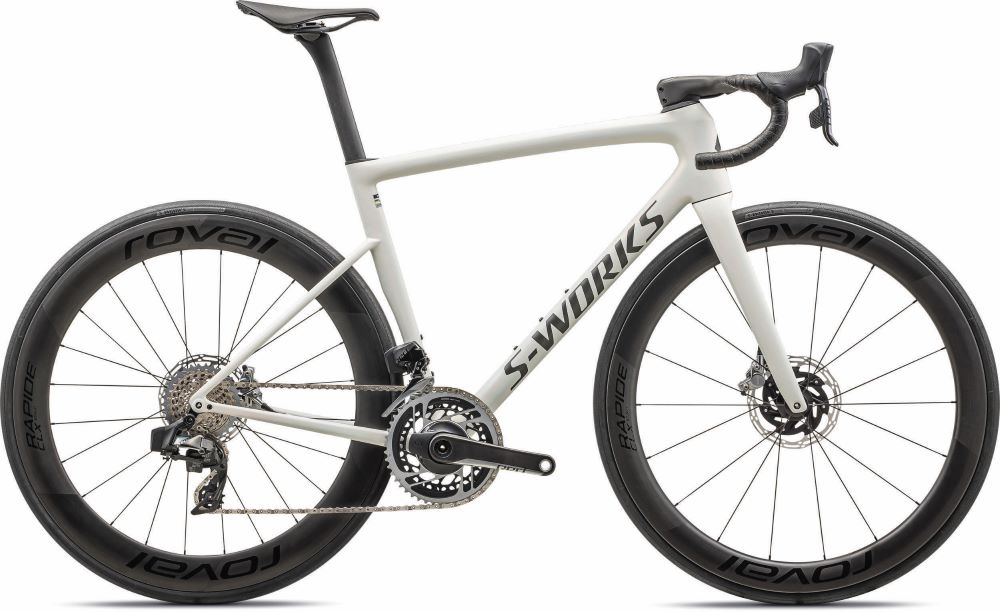
SL7 goes disc brake only. The frameset is now aero enough for Specialized to kill off the Venge
2023
Changes in the UCI rules around tube shapes let Specialized improve aero features at the front, but drop weight at the back of the SL8, achieving a 685g frame weight
